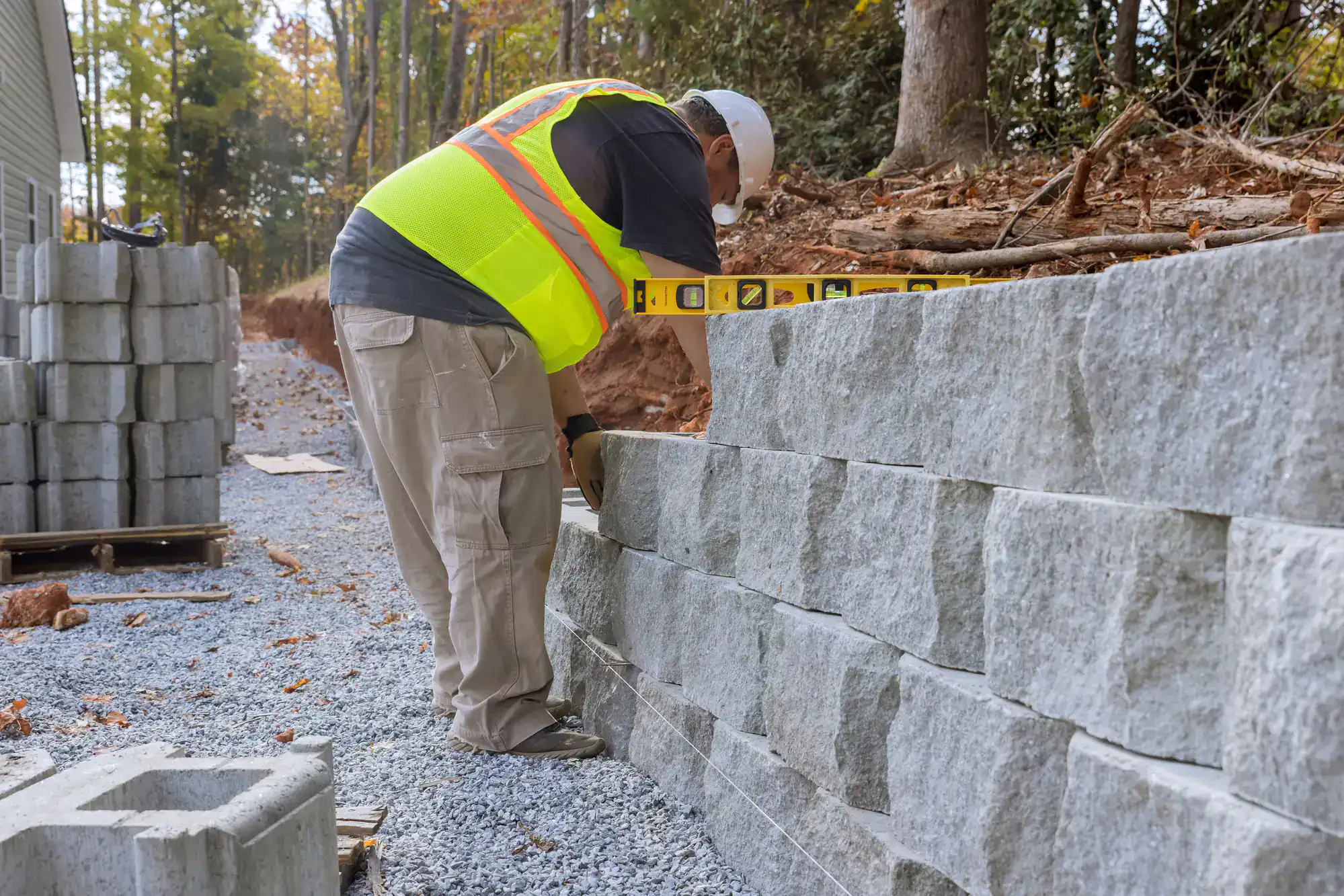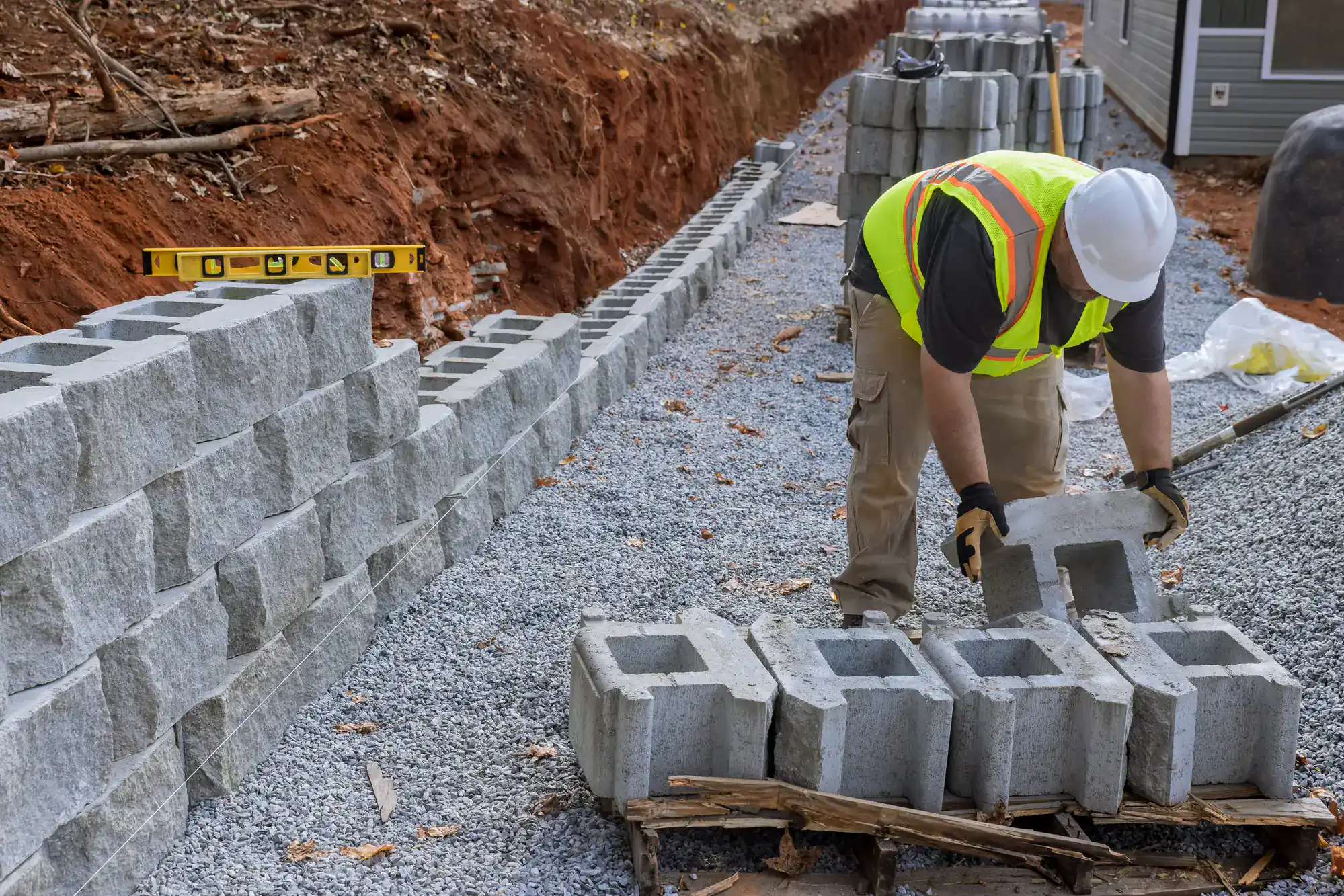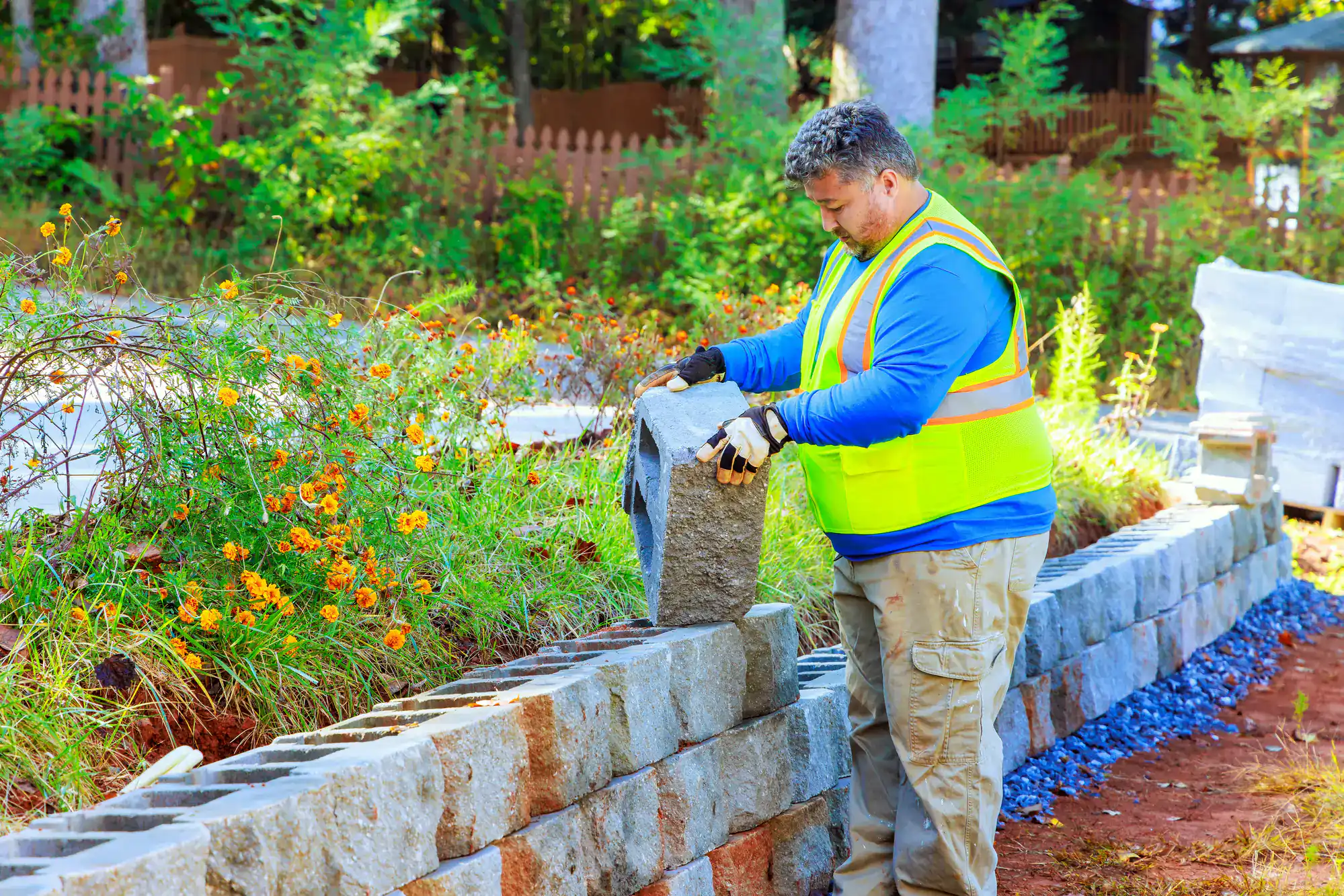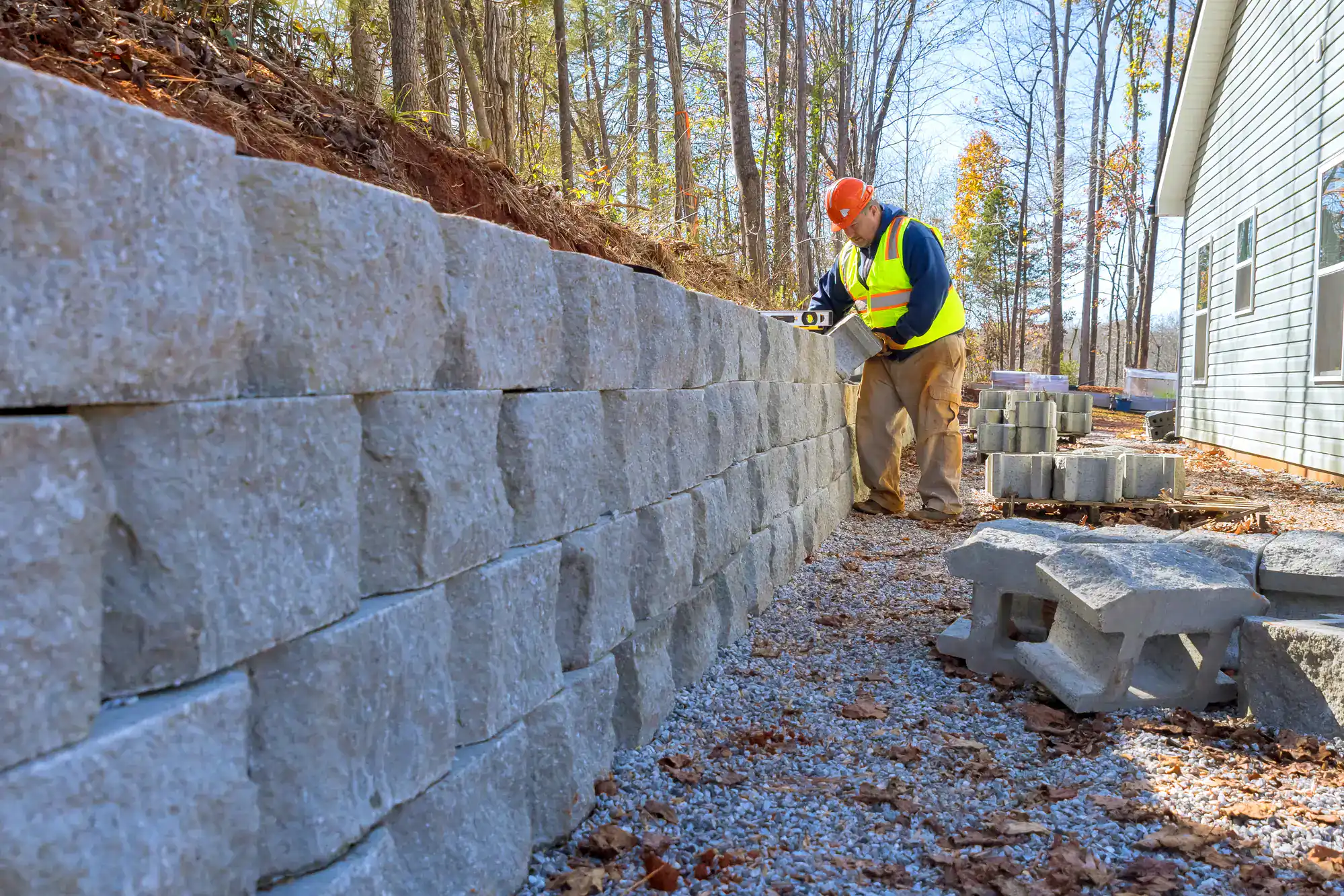

You know that steep area in your yard that’s always washing out? The one where nothing grows and water runs straight toward your foundation during storms? A properly engineered retaining wall fixes that problem permanently.
Instead of losing soil, fertilizer, and plants every rainy season, you get stable, level ground that actually adds value to your property. No more muddy runoff. No more replanting the same area year after year. No more worrying about what that erosion is doing to your foundation.
The space you couldn’t use before becomes functional landscape area. Plant beds that actually stay put. Seating areas that don’t slide downhill. Pathways that make sense.
We’ve been building retaining walls in Citrus County and surrounding areas since 1995. We’ve seen every type of soil condition, drainage challenge, and slope problem that Central Florida can throw at a property.
As authorized contractors for Tremron, Flagstone, and Belgard, we work with materials designed specifically for Florida’s climate and soil conditions. The walls we built in the late ’90s are still standing strong, which tells you something about our approach to drainage and foundation work.
When hurricane cleanup is needed, we’re out there helping neighbors. When local youth programs need support, we show up. That’s what family-owned businesses do in communities like Liberty Triangle.

Our process starts with understanding what’s actually happening with your soil and water flow. We measure slope angles, test soil composition, and figure out where water goes during heavy rain. This isn’t guesswork.
Next comes excavation and foundation prep. The base has to be absolutely right because everything depends on it. Proper drainage goes in behind the wall before any blocks get stacked. Without drainage, even the best materials will fail.
Then we build the wall itself, checking level and alignment at every course. Each block locks into place according to manufacturer specs. No shortcuts, no “good enough.” When we’re done, you get a wall that handles Florida weather for decades, not years.

Ready to get started?
In Liberty Triangle’s sandy soil conditions, not all retaining wall materials perform the same. We use segmental concrete blocks from Tremron, Flagstone, and Belgard – manufacturers who engineer their products specifically for Florida’s soil and weather challenges.
These interlocking systems handle ground movement better than poured concrete. They allow for proper drainage without compromising structural integrity. The blocks come in colors and textures that complement the established homes in Liberty Triangle’s neighborhoods.
For properties with significant height changes or complex drainage issues, we incorporate geogrid reinforcement and engineered drainage systems. Every installation includes proper base preparation, compacted aggregate, and drainage fabric to prevent the soil migration problems common in Central Florida.

Retaining wall costs in Liberty Triangle typically range from $45-55 per square face foot, depending on height, materials, and site conditions. A typical residential wall that’s 50 feet long and 3 feet high runs between $7,000-$10,000 installed.
Several factors affect pricing in this area. Sandy soil conditions require specific foundation preparation. Permit requirements kick in for walls over 12 inches tall, adding engineering and permit costs. Access limitations in established neighborhoods can impact installation efficiency.
The investment makes sense when you consider what erosion costs over time. Replacing washed-out landscaping, dealing with foundation drainage issues, and losing usable yard space adds up quickly.
Most municipalities in Marion County require permits for retaining walls taller than 12 inches. Walls 30-36 inches or higher also need safety railings per Florida building codes, which adds to both permit requirements and project costs.
The permit process typically involves engineered drawings and structural calculations, especially for walls over 3 feet tall. This isn’t just bureaucracy – Florida’s building codes account for soil conditions, hurricane loads, and rising water table issues specific to our area.
We handle the permit process as part of our service. We know local requirements and have established relationships with the engineering professionals needed for larger installations.
Properly built retaining walls in Liberty Triangle typically last 50-100 years with minimal maintenance. The key factors are appropriate materials for local soil conditions, correct drainage design, and professional installation that accounts for Florida’s weather patterns.
Segmental concrete block systems from manufacturers like Belgard and Tremron are engineered specifically for Florida conditions. They handle ground movement, heavy rainfall, and temperature cycling better than older materials like railroad ties or basic concrete.
The walls we built in the 1990s are still performing well because we built them with proper drainage from day one. Without drainage, even the best materials fail within a few years due to hydrostatic pressure buildup.
This confusion comes up often in Central Florida. Retaining walls hold back soil to prevent erosion and create usable space on sloped properties. Seawalls specifically protect against water intrusion from lakes, rivers, or coastal areas.
In Liberty Triangle, you’re dealing with retaining walls for slope stabilization and drainage control. The engineering requirements are different because you’re managing soil pressure and rainwater runoff, not constant water pressure from a body of water.
Both types of walls need proper drainage, but retaining walls focus on directing water away from the structure while seawalls are designed to keep water out entirely. The materials and construction methods reflect these different purposes.
Retaining walls are excellent for managing drainage issues, especially in Liberty Triangle’s sandy soil conditions. They can redirect water flow, prevent erosion, and eliminate the pooling problems common in sloped yards during Florida’s rainy season.
The key is incorporating proper drainage design into the wall system. This includes drainage fabric, aggregate backfill, and drain pipes that direct water to appropriate outlets. Without these elements, a retaining wall can actually make drainage problems worse.
We design every wall with drainage as a primary consideration. We’ve seen too many walls fail because someone focused on the blocks and ignored where the water goes. Proper drainage isn’t optional in Florida.
Retaining wall failure usually shows warning signs before catastrophic collapse – bulging, cracking, or water seepage behind the wall. The most common cause is inadequate drainage, which creates hydrostatic pressure that eventually overcomes the wall’s structural capacity.
In Liberty Triangle’s soil conditions, failure often happens during extended rainy periods when saturated soil becomes much heavier. If you notice any changes in your wall’s appearance or performance, have it evaluated immediately by a professional.
We stand behind our installations and can assess whether problems are repairable or require rebuilding. Early intervention usually saves significant money compared to waiting until complete failure occurs.
Useful Links